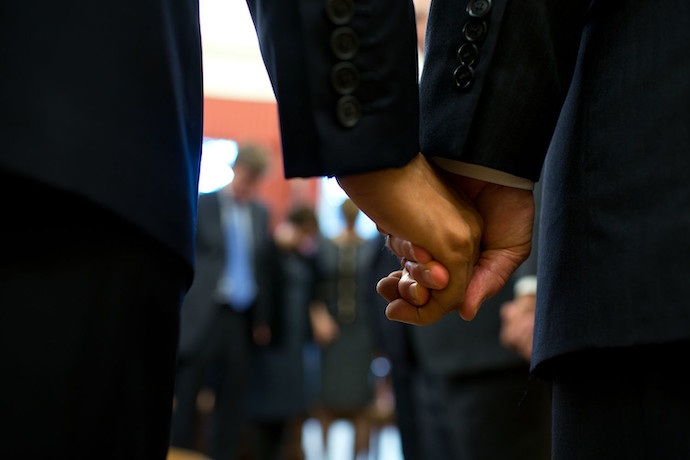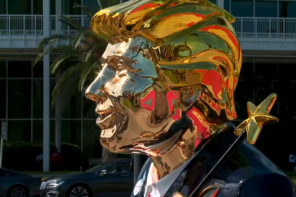The 2020 election season is ramping up. Senator Bernie Sanders dropped out of the Democratic contest three weeks ago, leaving former Vice President Joe Biden the presumptive presidential nominee. And that, of course, means we can now focus on the contest between Biden and President Donald Trump. This, in turn, means another round of obnoxious chattering-class hand wringing over whether Democrats can woo any of the “pro-life” vote (read: white evangelical Christians).
Right?
Anyone?
Bueller?
The usual chorus of champions of Democrats’ most misguided approach to faith outreach has fallen mostly silent this year. Believe me, I’m not complaining. It’s just that there are certain lines of political strategizing that seem to never say die, no matter how weak the argument may be, or how many times their predictions and promises fail to pan out. In this case, I’m not singing Ding-Dong! The Witch is Dead just yet, but I do think it’s worth pondering what might have led to the sudden decline in faith outreach discussion, which was still happening on a small scale late last year and early this year. This will pave the way for informed speculation about whether the discussion in question might be truly dead.
To start off, let me say that there are types of faith outreach, and discussions around them, that do make sense for Democrats to engage in. The Democratic Party has taken an important step toward fully embracing pluralism by acknowledging the contributions of secular Americans, who now make up about a fifth of the party. But this shouldn’t preclude Democratic candidates from judiciously targeting outreach toward African-American churches, synagogues, and mosques, as well as mainline Protestants, Christians of color, and Midwestern white Catholics, who may actually prove essential to a Biden Electoral College victory. The Biden campaign is already quietly engaging in this kind of faith outreach.
Yes, religious voters make up an important part of the pluralist Democratic coalition, and—even if God talk in political speeches meant for wide audiences annoys me—so long as atheists, agnostics, and the unaffiliated have a recognized seat at the table, I believe we can and should work together. As it’s white evangelicals who make up America’s most anti-pluralist demographic, the only faith outreach discussion I truly cannot abide is the one that focuses on Democrats trying to win them over, which erodes the Democratic commitment to pluralism. At best, outreach to white evangelicals most likely wastes resources while doing nothing, as those rare birds who are willing to vote for Democrats already do. At worst, it causes the Democrats to shift to the right on women’s rights, where a firm stand is both politically advantageous and the right thing to do.
The proponents of Democratic faith outreach to white evangelicals have produced no compelling evidence that the reason President Barack Obama was able to win a higher (though still underwhelming) share of white evangelicals in 2008 and 2012 relative to Hillary Clinton in 2016 was due to faith outreach as opposed to other factors. Nor have they shown that the decline in the white evangelical vote share for the Democratic candidate for president—26% in 2008, 21% in 2012, 16% in 2016—has anything more to do with former Secretary of State Hillary Rodham Clinton’s campaign strategy than it does with the increasing polarization of American society.
So the discussion really should die. But has it? I asked veteran civic engagement activist, regular RD contributor, and United Church of Christ Pastor Daniel Schultz to weigh in on the question. He confirmed my sense of strangeness at the absence of the usual faith outreach hand wringing, though he suggested we may start to see similar discussions about conservative white Catholics. Regarding evangelicals, Schultz also noted, “We may hear more once we get closer to the fall, particularly if North Carolina remains as close as it seems to be now.
But perhaps more importantly, Schultz agrees with Rachel Bitecofer’s controversial position that, in essence, there are no longer any swing voters to speak of. That makes turning out the base the key driver of winning an election. Schultz told me, “attracting a sliver of white evangelicals is probably not going to make a hell of a lot of difference, outside of North Carolina. Maybe it’ll save [Alabama Democratic Senator] Doug Jones’ bacon.”
In which case maybe it makes sense for Democrats to do a little highly targeted outreach to white evangelicals at the state and local level in races where it might make a difference, but it’s still not clear that reaching out to them as white evangelicals would make the difference. “The trick we’ve seen with the Religious Industrial Complex again and again,” Schultz observed, “is to attribute broad trends to religious movement specifically. Don’t fall for it. Don’t mistake correlation for causation.”
Meanwhile, much of the discussion about white evangelicals potentially rejecting Trump that took place a few months ago was fueled by retiring Christianity Today editor Mark Galli’s op-ed, “Trump Should be Removed from Office,” but even though Galli’s op-ed was measured, conservative, and quite milquetoast, all it really did was demonstrate the extent to which the once flagship evangelical magazine, founded by Billy Graham in 1956, is now out of touch with the vast majority of white evangelicals. Punctuating the point, Rev. R. Albert Mohler Jr., who made a point of voting for neither Trump nor Clinton in 2016, is now endorsing Trump for 2020, pointing to the president’s Supreme Court picks and even remarking that he has some “regret” over the position he took four years ago.
In making this announcement, Mohler also suggested that Trump might win an even higher percentage of the white evangelical vote than he did in 2016. I asked several experts to comment on the state of the white evangelical electorate and the significance of Mohler’s announcement. Boston University Professor emerita Nancy Ammerman noted, “I am not at all surprised at Mohler’s move, as he has always been extremely sensitive to the direction of the political winds.” Trump has, after all, vigorously pursued white evangelicals’ culture wars agenda. “They’ve gotten their judges,” Ammerman said, “and those judges are delivering—right down to supporting religious liberty arguments for keeping churches open during a pandemic.”
Calvin College Professor of History Kristin Kobes du Mez has spent years working on her forthcoming monograph Jesus and John Wayne: How White Evangelicals Corrupted a Faith and Fractured a Nation. She told me, “Since November of 2016 I’ve been watching closely for any sign of evangelical remorse. I haven’t seen it.” A few evangelical critics of Trump remain, but some, like Mohler, have changed course. And perhaps the most visible evangelical critic of Trump of all, president of the Southern Baptist Convention’s Ethics and Religious Liberty Commission Russell Moore, “seems to have been effectively muzzled,” according to Du Mez. “His recent op-ed about not sacrificing the old [to the coronavirus pandemic on behalf of the economy] is as prophetic as he’ll get these days,” she added.
Andrew L. Whitehead, an associate professor of sociology at Clemson University and co-author of the recent study of Christian nationalism Taking America Back for God: Christian Nationalism in the United States, was unsurprised to see Mohler’s shift framed in terms of the Supreme Court. He remarked, “It comes back to the power to enact their vision of a Christian America.” He added, “The numbers of Americans who embrace Christian nationalism are not declining since 2016, and Christian nationalism still pushes people to embrace Trump and stay in his camp,” which leaves Whitehead “confident we’ll see 80% of white evangelicals support Trump again, if not more.”
Can the Quixotic dream of Democratic faith outreach to white evangelicals, then, finally be laid to rest? Early indicators suggest that maybe, just maybe, three years of observing white evangelicals’ unwavering support for an amoral authoritarian demagogue who can’t keep from running his mouth has led the chattering classes to conclude, sensibly, that this demographic is a lost cause. It’s much too early, however, to rule out the possibility of a last-minute resurrection.





